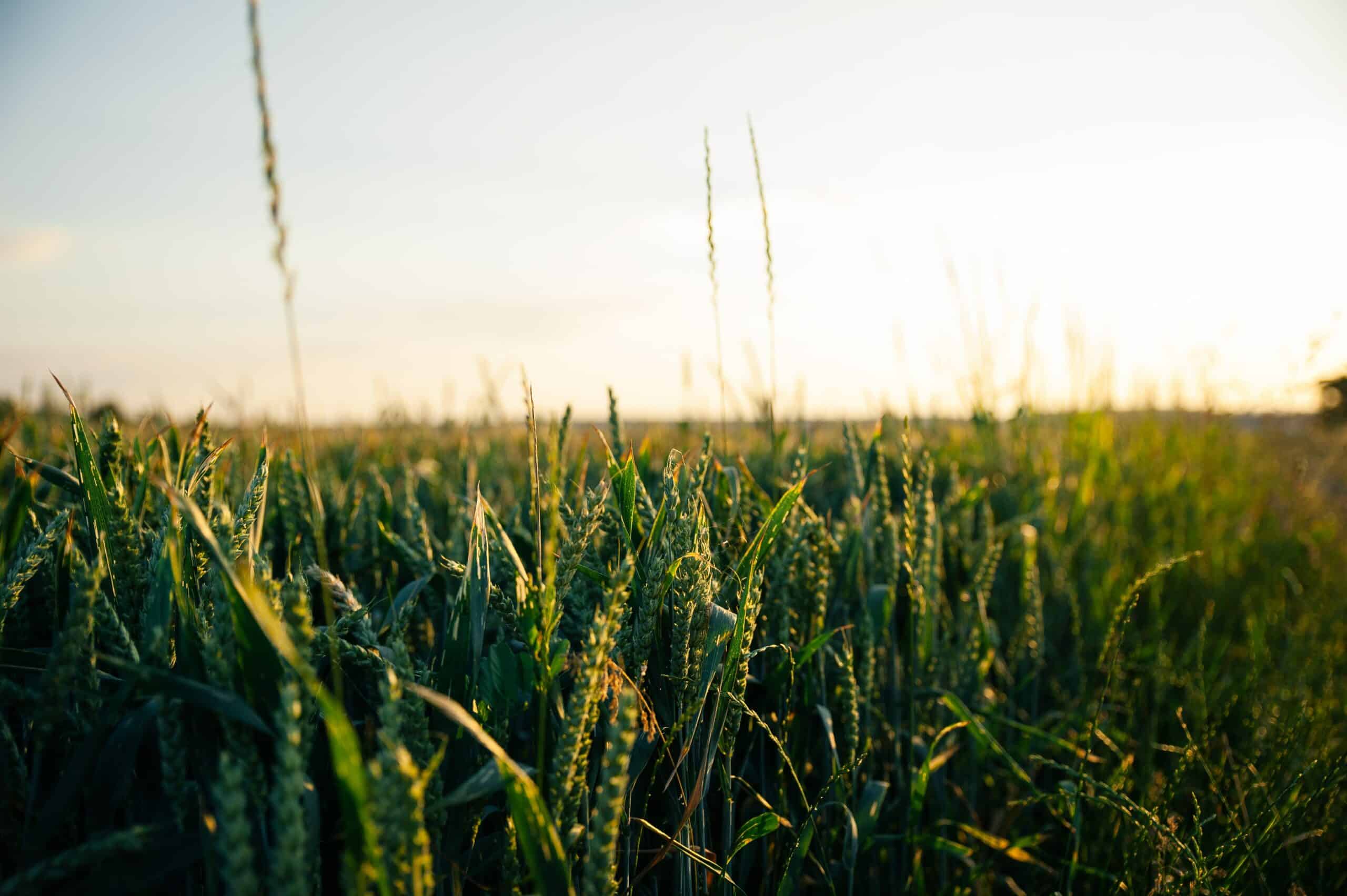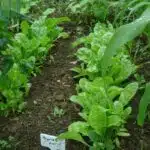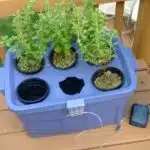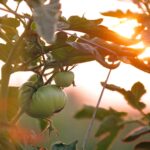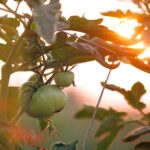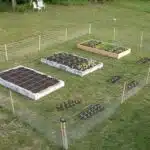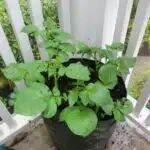Do you believe it is possible to reap a bounty of fresh vegetables from your garden in the middle of winter? It may seem like a distant dream, but with the right preparation and planning, it is absolutely possible. Planting a fall garden can yield delicious late-season crops that will thrive even after the first frost. This article will provide an easy-to-follow guide on how to plant a successful fall garden and grow late-season crops.
As many avid gardeners know, timing is everything when it comes to planting a successful fall garden. Knowing when to sow the seeds and when to harvest them is key for ensuring that your crops survive the cold temperatures and unpredictable weather patterns. With this helpful guide, you’ll have all of the best tips and tricks for making sure your plants reach maturity before the onset of winter.
In addition to providing detailed instructions on how to plan and prepare your fall garden, this article will also include advice on which types of plants are best suited for cooler climates and what strategies you should use to keep your crops healthy throughout the season. So if you’re ready to learn more about how to create an abundant harvest at home during the winter months, read on!
Identifying The Best Time To Plant A Fall Garden
Ah, fall – the season for sweater weather, pumpkin spice lattes, and of course, planting a garden. Whether you’re a seasoned green thumb or are just getting your hands dirty for the first time, there’s no better way to welcome autumn than by starting a late-season vegetable garden. But when is the best time to pull out those trowels and get planting?
The timing of planting your fall garden will depend on what part of the country you live in. Generally speaking, it’s best to wait until after summer ends to prevent crops from withering away before they have a chance to grow. Most areas provide specific recommendations as to when it’s safe to plant – usually between mid-August and early October. A good rule of thumb is that if nighttime temperatures stay at least 40 degrees Fahrenheit (around 4 degrees Celsius), then it’s likely safe to start putting seeds in the ground.
Once you’ve determined when is the most ideal time for planting your fall garden, consider which vegetables can handle cooler temperatures and shorter days better than others. Popular choices include carrots, lettuce, kale, radishes, spinach and Swiss chard – all of which are hearty enough to survive some frosty nights yet still yield delicious results! Understanding these benefits can help ensure a successful end-of-season harvest.
Understanding The Benefits Of Growing Late-Season Crops
As the old adage goes, ‘the best time to plant a tree was twenty years ago; the second best time is now.’ Planting a fall garden and growing late-season crops allows you to get the most out of your gardening efforts. Understanding the benefits of these crops can help you make more informed decisions about what and when to plant.
Growing late-season crops has many advantages. Not only do they provide fresh, nutritious vegetables for months after planting, but they also require less maintenance than spring or summer crops. Additionally, fall vegetables are often more resilient in cold weather and have stronger flavors than their earlier season counterparts. With careful planning and preparation, you can extend your harvest into wintertime for maximum yield with minimal effort.
Having an understanding of what types of vegetables thrive in colder climates will help ensure your success in planting a fall garden. Certain root vegetables like carrots, beets, and turnips tend to do well in cooler temperatures while leafy greens such as spinach, kale, and lettuce can be planted later in the season when other plants have finished producing. Knowing which vegetables thrive in colder temperatures can make all the difference when it comes to successfully growing late-season crops. With this knowledge in hand, you’ll be ready to select the right location for your fall garden!
Selecting The Right Location For Your Fall Garden
When it comes to gardening, location is key. In fact, an estimated 80% of a gardener’s success depends on the right location for their garden. This makes selecting the right spot for your fall garden an essential step in the process.
When choosing a location for your fall garden, consider variables such as sunlight requirements and soil quality of the crops you plan to grow. Make sure the site has access to at least six hours of full sun each day and is well-drained with soil that is rich in organic matter. Additionally, keep in mind any potential obstacles such as tree roots or large rocks that may impede growth and should be cleared before planting.
Finally, think about how much space you have available for your fall garden and plan accordingly. If you have limited real estate, you might consider container gardening or vertical gardening options which can help maximize space while still offering plenty of opportunities for late-season crop growth. With a little planning and preparation, selecting the right spot for your fall garden will set you up for successful harvest come autumn!
Deciding What Crops To Plant In The Fall
It’s the time of year where summer begins to come to a close and the garden season starts to wind down. What can you do with your garden as the temperatures start to drop? For those looking for an opportunity to continue gardening in the fall, deciding what crops to plant is the next crucial step.
Weeds and other pests may still be present in the autumn months, but with careful planning, you can create a thriving late-season garden full of colorful blooms and flavorful veggies. Depending on your climate, some crops may grow better than others during this time of year. Consider researching cold-tolerant varieties or look into planting crops that will mature quickly before winter sets in.
Root vegetables like carrots and turnips are great for growing late in the season. Planting greens such as kale and spinach also works well since these types of plants thrive even in colder weather. Herbs like thyme, oregano, and chives can also be planted during this time of year due to their hardiness. Thinking ahead about what will work best for your specific area will make all the difference when it comes to harvesting a successful harvest!
Now that you’ve decided which crops you’d like to plant in your fall garden, it’s time to move onto choosing the appropriate soil so they can flourish during cooler months.
Choosing The Appropriate Soil For Your Fall Garden
Ah, soil: the root of all gardening success. That’s right—without the perfect soil composition, your fall garden will be doomed before it even gets started! Luckily, we have some sage tips to ensure you make the most of your late-season crop yields. Let’s dive in and learn how to choose the appropriate soil for your fall garden.
Coming up with an intricate plan for a successful fall harvest may seem like a fool’s errand, but selecting the right soil is a crucial part of any gardener’s process. If you’re looking for maximum flavor and nutrition from your crops, then you’ll need to pick a soil that has good drainage and enough nutrients like nitrogen, phosphorus and potassium to sustain plant growth. And don’t forget about organic matter like compost or manure! It adds essential nutrients and helps retain moisture in the soil.
So if you’re determined to get the most out of your fall garden, invest time in finding quality soil that meets all these criteria—it’ll help ensure that your late-season crops thrive! And now that we’ve mastered this step on our path toward harvesting delicious fall produce, let’s move on to preparing our garden for planting those tasty crops.
Preparing Your Garden For Planting Fall Crops
It’s like a mad dash to the finish line – preparing your garden for planting fall crops is a crucial step that must be taken in order to grow late-season produce. It’s an absolute must if you want to have a successful garden in the fall! The task may seem daunting, but with the right steps and careful planning, it can be done with ease.
Preparing your garden for planting fall crops requires an immense amount of work, so don’t underestimate the process! You’ll need to ensure that your soil is appropriate for the type of crop you plan on growing. Begin by removing any weeds and tilling the soil. This will help aerate it as well as make it easier for roots to spread and develop properly. Additionally, use organic mulch around each plant or seedling to help retain moisture and reduce weeds from growing.
Once you’ve completed these steps, it’s time to amend the soil so that it is suitable for late-season crops. This involves adding compost or manure to improve nutrient levels along with improving overall water retention and drainage. Finally, water your plants thoroughly after planting them – this helps ensure that they get off on a healthy start! To wrap up this section, amending the soil is essential if you want to successfully grow late-season crops in your garden this fall season.
Amending The Soil For Late-Season Crops
It’s a gardener’s dream – to extend their growing season and reap delicious fall harvests! Amending the soil for late-season crops is essential to ensure that your garden will flourish until the last frost. With a little bit of effort, you’ll look forward to harvesting vegetables and herbs as far into autumn as possible. Absolutely incredible!
Soil amendments are materials that are added to soil to improve its structure, drainage, or fertility. Compost is an excellent soil amendment because it adds valuable nutrients and organic matter that can help plants grow. You can also add other materials such as sand, manure, or peat moss for extra aeration if needed. To determine what kind of amendment you need for your soil type, consult with your local garden center or extension office for advice.
Once you’ve decided which amendments are necessary for your garden, it’s time to get them incorporated into the soil. It’s best to spread a thin layer over the entire surface of the garden bed before tilling in order to make sure they’re evenly distributed throughout the entire area. Then use a trowel or hand rake to mix it in thoroughly with existing soil. With this step complete, you’re ready to start planting fall crops in containers or directly in the ground!
Planting Fall Crops In Containers
Planting fall crops in containers is an easy way to get a head start on your late-season garden. Containers are great because they give you more control over the environment, and they’re easier to move around if needed. Plus, you don’t have to worry about weeds or soil compaction. It’s important to choose the right container size for your crop — too small and the plants won’t have enough room to grow; too large and it might take too long for the soil to warm up.
When planting, make sure you use a light, fast-draining potting mix that contains plenty of organic matter. You can also add extras like fertilizer or slow-release nutrients if needed. Once you’ve filled your container with soil and added any nutrients, it’s time to plant your seeds or seedlings. Make sure you space them out evenly so they have enough room to grow and air circulation is optimal.
Finally, water your newly planted fall crops regularly but don’t overwater them — water until the top inch of soil feels dry when touched gently with a finger. This will help ensure that the roots can access oxygen as well as moisture, which is essential for healthy growth during this season.
Watering Fall Crops Adequately
Watering fall crops can often feel like a necessary evil, with the endless cycles of rain and drought that come with the season. But, as any gardener knows, proper hydration is essential if you want to keep your plants healthy and boost late-season crop yields. So, let’s explore how to keep your fall garden well watered without overdoing it.
Without adequate water, your plants won’t be able to absorb nutrients from the soil and will struggle to reach their full potential. That’s why it’s important to water regularly but not excessively – too much water can cause root rot, which will leave your plants weak and vulnerable to disease. The best way to ensure your plants are getting enough moisture is by using mulch around them; this acts as a barrier that prevents water from evaporating too quickly in hot weather. Additionally, try to avoid watering during midday when temperatures are higher as this can lead to scorching leaves.
The key is finding a balance between frequent watering and letting the soil dry out completely; both extremes can damage crops so monitoring the moisture levels in the soil is crucial for success. If you’re unsure about when or how much to water your garden, consider investing in a moisture meter which will help you gauge when it’s time for another dousing! And don’t forget – even though it may feel like overkill – giving your crops an occasional deep soak will help them thrive in the long run.
Befriending Beneficial Insects For Fall Crops
Did you know that 1 in every 4 bites of food eaten is made possible thanks to the help of beneficial insects? These helpful critters help with pest control and pollination, both of which are essential for successful fall crops. So, why not give them a helping hand as well? In this section, we’ll discuss how to befriend beneficial insects for your fall crops.
Beneficial insects can be attracted to your garden by planting a variety of flowers and herbs throughout the growing season. Asters, yarrow, catmint, dill, fennel, and other flowering plants will attract bees and butterflies while providing nectar for other beneficials like lacewings. You can also incorporate companion planting into your garden layout by growing plants that repel pests like marigolds or chrysanthemums near vulnerable crops.
Finally, avoid using chemical pesticides in the garden as this will kill off beneficial bugs as well as pests. Instead opt for natural methods such as spraying soapy water on affected areas or introducing predators such as ladybugs or praying mantises directly into the garden. With these simple steps in place you’re sure to have plenty of helpful critters buzzing around come harvest time! Now let’s look at how mulching and cover cropping can also contribute to successful fall crops.
Mulching And Cover Cropping For Fall Crops
Mulching and cover cropping are two key steps to success when planting a fall garden. Not only do they help keep the soil healthy, but they also help protect plants from extreme temperature fluctuations and drought. Furthermore, mulching helps reduce weeds and conserve water, while cover cropping helps improve soil fertility and attract beneficial insects.
When mulching for a fall garden, it’s important to use organic materials like leaves or grass clippings that will decompose over time, adding nutrients back into the soil. This can be done either directly around the plants or as a layer over larger areas of your garden bed. Adding a layer of mulch also helps prevent erosion during heavy rains in the late season.
Cover cropping is another great way to prepare your fall garden for success. Cover crops such as legumes, buckwheat, oats, and rye can be planted between rows of vegetables to provide additional nutrition while blocking out weeds and helping retain moisture in the soil. As an added benefit, these cover crops can also attract beneficial insects to your garden that will aid in pest control naturally as you move forward with your late-season harvest.
With these two steps taken care of, it’s now time to look at knowing when to harvest late-season crops from your fall garden.
Knowing When To Harvest Late-Season Crops
Knowing when to harvest late-season crops is essential for a successful fall garden. It’s important to understand when the produce is ready and how to preserve it for later use. Harvesting at the right time ensures that vegetables are at peak flavor and nutrition, while preserving them correctly helps them last longer.
Harvesting late-season crops isn’t difficult, but it does require patience and attention. Most vegetables are ready when they reach their full size and color; however, some need a bit more time before they’re ripe enough to eat. You can also tell if a vegetable is ready by gently tugging on it or checking the stem for signs of maturity.
Once you’ve determined that your vegetables are ripe, it’s time to harvest them with care. Make sure you use clean tools like pruning shears or scissors, and avoid bruising or cutting into the fruits or vegetables as you’re collecting them. This will help ensure that they remain fresh until you’re ready to use them or preserve them for future meals.
Preserving The Harvest From Late-Season Crops
As the last of the summer sun fades away, the work of harvesting late-season crops is just beginning. Preserving the bounty of nature’s harvest is a great way to ensure that you have delicious produce to enjoy throughout the year. This step in the process of planting a fall garden requires an understanding of how best to store and preserve your crops.
It is important to understand which methods are best for each type of crop. Canning and freezing are two popular ways to preserve produce, but it may be necessary to use different methods depending on what types of fruits and vegetables you are growing in your garden. For instance, tomatoes can be canned or frozen, while cucumbers need to be pickled or fermented for long-term storage.
Regardless of which preservation method you choose, it is essential that you take all necessary precautions when storing your food. Proper labeling and date tracking will help make sure everything stays fresh for as long as possible. Taking these steps ensures that your hard work in planting a fall garden doesn’t go to waste and that you can enjoy your late-season harvest throughout the coming months and years.
Now that we’ve discussed preserving late-season crops, let’s look at how we can prevent winter damage so they can thrive even after cold weather sets in.
Preventing Winter Damage For Fall Crops
Statistics show that more than half of gardeners in the US grow their own food – a number that’s been steadily increasing over the past few years. As such, it’s important to know how to properly care for your fall crops to ensure their survival through winter. In this article, we’ll discuss how to prevent winter damage for fall crops.
To begin with, make sure you’ve adequately prepared the soil for winter. This means improving its drainage and adding compost and mulch. This will help prevent the ground from becoming overly dry in colder months and protect the roots from freezing temperatures. After planting, apply an additional layer of mulch around the plants to further insulate them from cold weather.
Next, when harvesting your late-season crops, take extra care not to leave any bits behind as these can attract pests or diseases which could cause damage during wintertime. Additionally, be sure to clean up spent plant material promptly as this can also increase disease risk over the colder months. Finally, pay close attention to weather forecasts so you are aware of any potential frost warnings that could affect your crop before they get too far into growth mode. Taking these steps will help reduce the risk of winter damage and ensure your fall vegetables are ready come springtime!
Now that we’ve gone through how to prevent winter damage for fall crops, let’s talk about troubleshooting problems with late-season crops should they arise.
Troubleshooting Problems With Late-Season Crops
Planting a fall garden and growing late-season crops can be challenging. This is because the shorter days, colder temperatures, and unpredictable weather all combine to make it difficult for plants to thrive. That’s why it’s important to know how to troubleshoot any problems that might arise with late-season crops.
The most common issue with late-season crops is frost damage. When temperatures dip below freezing, many vegetables will suffer damage or die back completely. To prevent this, you should wait until the temperature has dropped consistently before planting cold-sensitive vegetables like broccoli and kale. Similarly, if temperatures are expected to drop further after planting, you should cover the plants with a layer of straw or other insulating material for extra protection.
Another problem that can occur is infestations from pests such as aphids, caterpillars and slugs. To help control these pests, you can use floating row covers or insecticidal soaps on your plants. You may also want to try companion planting – this involves planting certain plants together which helps repel pests from each other. Additionally, regular weeding will help ensure your crop doesn’t become overwhelmed by unwanted insects or weeds that could compete for resources in the soil.
Taking these steps will help protect your late-season crops and ensure a successful harvest come fall. With a little extra knowledge and preparation, you’ll be well on your way to growing an abundant fall garden!
Frequently Asked Questions
What Are The Most Common Fall Crops To Plant?
Fall is the perfect time to start planting a garden. With temperatures cooling down, soil getting more moisture and fewer pests and diseases affecting the plants, now is the best time to get started. The most common fall crops to plant include leafy greens, root vegetables, cruciferous veggies and brassicas.
When it comes to leafy greens, collards, spinach, kale and Swiss chard are some of the popular options that can be planted in fall. These vegetables have a high nutrient content and are easy to grow in cooler weather. Root vegetables such as carrots, beets, radishes and turnips are also great for fall gardens as they store well so you can enjoy them all winter long.
Cruciferous vegetables like broccoli and cauliflower take longer to mature than other vegetables but provide essential vitamins and minerals when eaten fresh or cooked. Brassica vegetables such as cabbage, Brussels sprouts and kohlrabi also require a bit more time to grow but can provide a delicious addition to any meal when harvested late in the season.
Planting these common fall crops can help ensure your garden produces healthy fruits and vegetables during colder months. Whatever type of vegetable you choose for your garden this fall, make sure you do your research on how best to care for it so that you can reap the rewards of your labor all season long!
How Much Water Do Fall Crops Need?
It’s widely accepted that planting a fall garden is relatively easy, and with careful planning, you can grow late-season crops. But one of the most important questions to consider when planting a fall garden is: how much water do these crops need to survive?
To answer this question, let’s look at some research into the water requirements of different types of vegetables. Studies have shown that root vegetables like carrots and beets don’t need as much water as leafy vegetables like cabbage or kale. This means that if you’re growing root vegetables in your fall garden, you’ll only need to water them once or twice a week. However, when it comes to leafy vegetables, they require more frequent watering – usually three times a week – in order for them to thrive.
What’s more, soil moisture plays an important role in crop growth. Soils that are dry or sandy require more frequent watering than those that are moist or loamy. This means it’s important to check the soil moisture levels before deciding on how often you should water your plants. When in doubt about how much water your plants need, it’s always best to err on the side of caution and give them an extra drip of hydration from time-to-time.
Planting a successful fall garden requires more than just selecting the right type of crops; it also involves considering their water needs and making sure they get enough hydration throughout their growing period. With careful planning and regular monitoring of soil moisture levels, you can ensure your late-season crops stay healthy and vigorous during their growth cycle.
Is There A Difference Between Fall And Spring Soil Preparation?
Did you know that soil is the foundation of a successful garden? It’s critical to prepare it properly, but did you ever wonder if there are differences between fall and spring soil preparation? With fall around the corner, let’s explore this question.
Preparing your soil in the fall can be challenging since the ground often freezes sooner than anticipated. This means you have to work quickly to ensure that you can aerate and amend your soil before it becomes too cold and unworkable. On the other hand, spring soil preparation requires different techniques such as turning over the soil with a rototiller or shovel to break up any clumps of dirt, adding compost, and tilling again until it’s nice and loose.
When deciding which season is best for preparing your garden’s soil, consider whether you’re planting cool-season vegetables or warm-season ones. Cool-season vegetables need more time to mature and will benefit from being planted earlier in the year when temperatures are cooler. On the other hand, warm-season vegetables should be planted when temperatures are warmer so they don’t get stunted by frosty weather. Knowing which type of plant you want to grow can help determine when you should prepare your soil for optimal results.
No matter what time of year you choose to get ready for gardening season, make sure that your soil has good drainage and is free of weeds or debris before planting anything else. A little extra attention now will pay dividends later!
Are There Any Specific Tools Or Supplies Needed For Fall Gardening?
Whether you’re an experienced gardener or just starting out, it’s important to have the right tools and supplies for successful fall gardening. According to the National Gardening Association, over 80 million households in the US participate in lawn and garden activities. With that many people getting outside this autumn, having the right supplies can make all the difference.
One of the most essential items when planting a fall garden is a spade or shovel for turning soil and digging holes for bulbs and other root vegetables. A rake or hoe is also necessary for breaking up hard-packed soil so plants can take root more easily. For larger areas, a wheelbarrow can come in handy for hauling compost and other materials around your yard. Additionally, it’s a good idea to invest in gloves, knee pads and other protective apparel to protect yourself from scrapes and blisters while gardening.
Finally, if you plan on planting any fruit trees or bushes this autumn, you’ll need pruning shears and secateurs to shape them into their desired form as they grow. It’s also important to have proper irrigation equipment such as hoses or sprinklers so that plants have enough water during dry times. With these supplies in hand, your fall garden will be off to a thriving start!
What Type Of Pests Should Be Monitored For Fall Crops?
Gardening in the fall can be a great way to enjoy the season and get some fresh produce from the garden. As the days grow cooler, it’s important to keep an eye out for pests that could damage your crops. With the right strategies, you can protect your late-season bounty from harmful insects.
Like with any season of gardening, it pays off to plan ahead. What types of pests should you look out for when planting a fall garden? Aphids, slugs, caterpillars and leafhoppers are all likely suspects when it comes to damaging crops in autumn. These pesky critters can quickly decimate delicate plants if left unchecked.
Fortunately, there are plenty of ways to combat these unwanted guests. Using row covers or insect netting is a great way to keep them away from your garden without having to resort to harsh chemicals. If you do need something stronger, opt for organic sprays that won’t harm beneficial insects like bees and butterflies. Taking preventative measures now will help ensure that your late-season harvest is successful and delicious!
As the saying goes, an ounce of prevention is worth a pound of cure – so take steps today to safeguard your fall garden from pests and ensure a fruitful harvest this season! With careful monitoring and proactive solutions, you’ll be able to enjoy all the bounties of autumn without worry or hassle.
Conclusion
In conclusion, fall gardening can be a rewarding and enjoyable experience. With the right knowledge and tools, you can have a bountiful harvest of late-season crops. Knowing which crops to plant, how much water they need, the difference between spring and fall soil preparation, and the necessary supplies for successful gardening is essential for success. Additionally, it is important to keep an eye out for pests that may interfere with your fall garden. Taking all of these steps will ensure that your garden blooms like a rainbow in autumn! So don’t delay – get planting now to reap the rewards of a flourishing fall garden!

